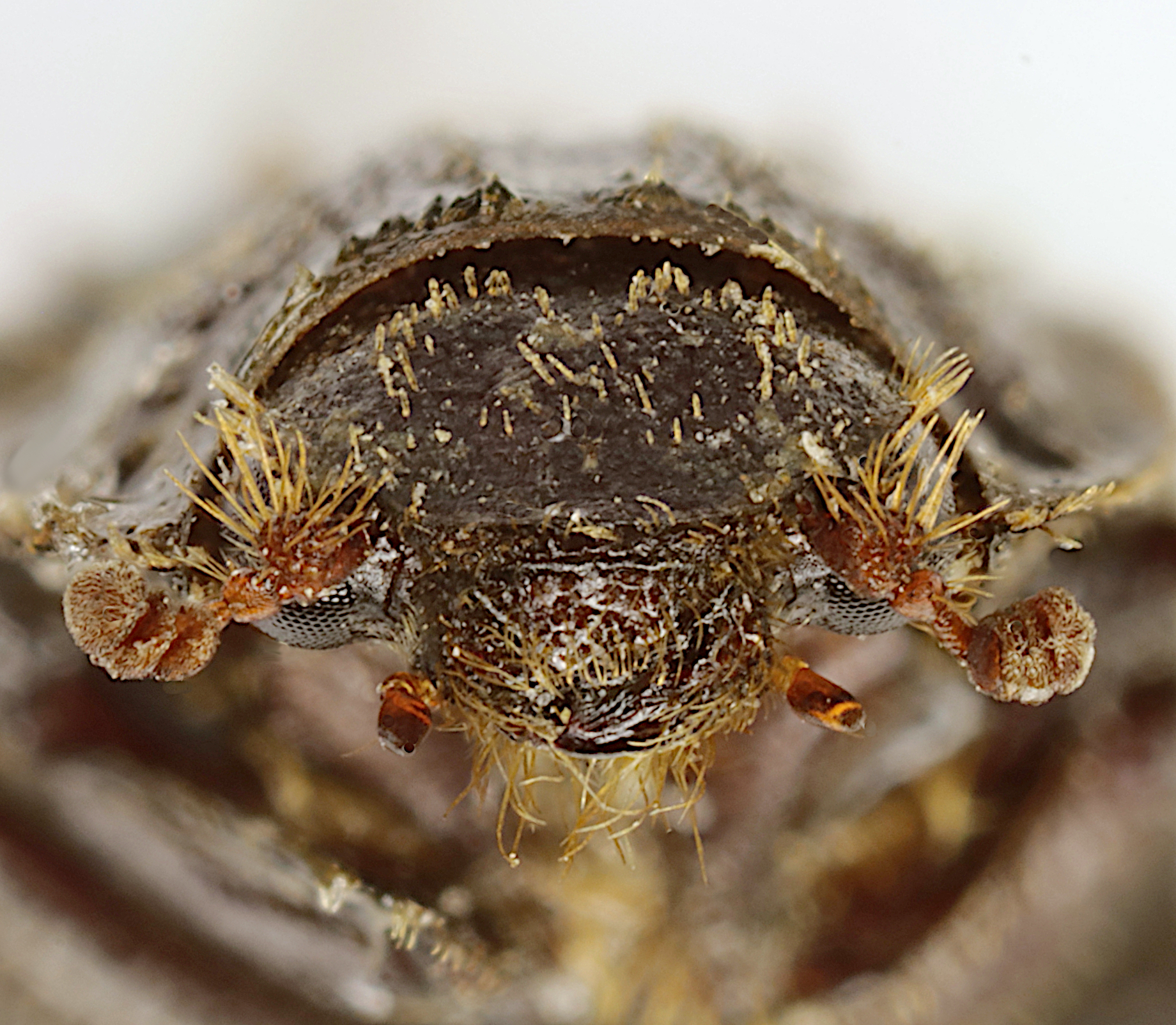|
Omorginae
''Omorginae'' is a subfamily of beetles in the family Trogidae Trogidae, sometimes called hide beetles, is a family of beetles with a distinctive warty or bumpy appearance. Found worldwide, the family includes about 300 species contained in four or five genera. Trogids range in length from 2 to 20 mm. Thei ... which includes extant species and extinct beetle species from the Lower Cretaceous. The subfamily contains the following genera: *'' Cretomorgus'' Nikolajev, 2007 *'' Omorgus'' Erichson, 1847 *'' Polynoncus'' Burmeister, 1876 References Trogidae Beetle subfamilies {{Trogidae-stub ... [...More Info...] [...Related Items...] OR: [Wikipedia] [Google] [Baidu] |
Cretomorgus
''Cretomorgus ikhbogdensis'' is an extinct, fossil species of hide beetle that lived in modern-day Mongolia during the Lower Cretaceous, approximately 112 million years ago, making it the earliest preserved species of the subfamily Omorginae. ''C. ikhbogdensis'' is the sole species of the genus ''Cretomorgus''. References † A dagger, obelisk, or obelus is a typographical mark that usually indicates a footnote if an asterisk has already been used. The symbol is also used to indicate death (of people) or extinction (of species or languages). It is one of the mo ... Fossil taxa described in 2007 Fossil beetle genera Monotypic Scarabaeiformia genera Monotypic prehistoric insect genera {{Trogidae-stub ... [...More Info...] [...Related Items...] OR: [Wikipedia] [Google] [Baidu] |
Trogidae
Trogidae, sometimes called hide beetles, is a family of beetles with a distinctive warty or bumpy appearance. Found worldwide, the family includes about 300 species contained in four or five genera. Trogids range in length from 2 to 20 mm. Their shape is oblong to oval, with a generally flat abdomen. Their color ranges from brown to gray or black, and they often encrust their bodies with soil. They resemble Scarabaeidae, scarab beetles with heavy limbs and spurs. They are scavengers and are among the last species to visit and feed on carrion. They are most often found on the dry remains of dead animals. Both adults and larvae eat feathers and skin. Some species are found in bird and mammal nests. Details of the life histories of many species are poorly known, since many are specialized to particular types of nests. They are often overlooked by predators and collectors due to their behaviors of covering their bodies with soil and becoming motionless when disturbed. This group ma ... [...More Info...] [...Related Items...] OR: [Wikipedia] [Google] [Baidu] |
Subfamily
In biological classification, a subfamily (Latin: ', plural ') is an auxiliary (intermediate) taxonomic rank, next below family but more inclusive than genus. Standard nomenclature rules end botanical subfamily names with "-oideae", and zoological subfamily names with "-inae". Detarioideae is an example of a botanical subfamily. Detarioideae is a subdivision of the family Fabaceae (legumes), containing 84 genera. Stevardiinae is an example of a zoological subfamily. Stevardiinae is a large subdivision of the family Characidae, a diverse clade In biology, a clade (), also known as a Monophyly, monophyletic group or natural group, is a group of organisms that is composed of a common ancestor and all of its descendants. Clades are the fundamental unit of cladistics, a modern approach t ... of freshwater fish. See also * International Code of Nomenclature for algae, fungi, and plants * International Code of Zoological Nomenclature * Rank (botany) * Rank (zoolo ... [...More Info...] [...Related Items...] OR: [Wikipedia] [Google] [Baidu] |
Lower Cretaceous
Lower may refer to: * ''Lower'' (album), 2025 album by Benjamin Booker * Lower (surname) * Lower Township, New Jersey *Lower Receiver (firearms) * Lower Wick Gloucestershire, England See also * Nizhny {{Disambiguation ... [...More Info...] [...Related Items...] OR: [Wikipedia] [Google] [Baidu] |
Omorgus
''Omorgus'' is a genus of beetles of the family Trogidae with about 140 species worldwide. ''Omorgus'' beetles are generally between 9 and 20 mm long. Taxonomy ''Omorgus'' has three subgenera, '' Omorgus (Omorgus)'', '' Omorgus (Afromorgus)'', and '' Omorgus (Haroldomorgus)'', with the following species: Subgenus ''Omorgus'' * '' Omorgus alatus'' (Macleay, 1888) * '' Omorgus alius'' (Scholtz, 1986) * '' Omorgus alternans'' (W.S. Macleay, 1826) * '' Omorgus amictus'' (Haaf, 1954) * '' Omorgus aphanocephalus'' (Scholtz, 1986) * '' Omorgus asper'' LeConte, 1854 * '' Omorgus augustae'' (Blackburn, 1892) * '' Omorgus australasiae'' (Erichson, 1842) * '' Omorgus badeni'' (Harold, 1872) * '' Omorgus borrei'' (Harold, 1872) * '' Omorgus brucki'' (Harold, 1872) * '' Omorgus candezei'' (Harold, 1872) * '' Omorgus candidus'' (Harold, 1872) * '' Omorgus capillamentis'' Strümpher & Scholtz, 2011 * '' Omorgus carinatus'' (Loomis, 1922) * '' Omorgus carinicollis'' (Scholtz, 1986) * '' Om ... [...More Info...] [...Related Items...] OR: [Wikipedia] [Google] [Baidu] |
Polynoncus
''Polynoncus'' is a genus of beetles of the Family Trogidae. It contains the following species: *'' Polynoncus aeger'' ( Guerin-Meneville, 1844) (South America) *'' Polynoncus aricensis'' (Gutierrez, 1950) (South America) *'' Polynoncus bifurcatus'' (Vaurie, 1962) (South America) *'' Polynoncus brasiliensis'' (Vaurie, 1962) (South America) *'' Polynoncus brevicollis'' (Eschscholtz, 1822) (South America) *'' Polynoncus bullatus'' (Curtis Curtis or Curtiss is a common English given name and surname of Anglo-Norman origin, deriving from the Old French ''curteis'' (Modern French">-4; we might wonder whether there's a point at which it's appropriate to talk of the beginnings of Fren ..., 1845) (Chile, Argentina) *'' Polynoncus burmeisteri'' (Pittino, 1987) (Argentina) *'' Polynoncus chilensis'' (Harold, 1872) (Chile, Argentina) *'' Polynoncus crypticus'' ( Diéguez, 2019) (Chile) *'' Polynoncus diffluens'' (Vaurie, 1962) (Chile) *'' Polynoncus ecuadorensis'' Vaurie, 1962 (Ecuador) ... [...More Info...] [...Related Items...] OR: [Wikipedia] [Google] [Baidu] |
